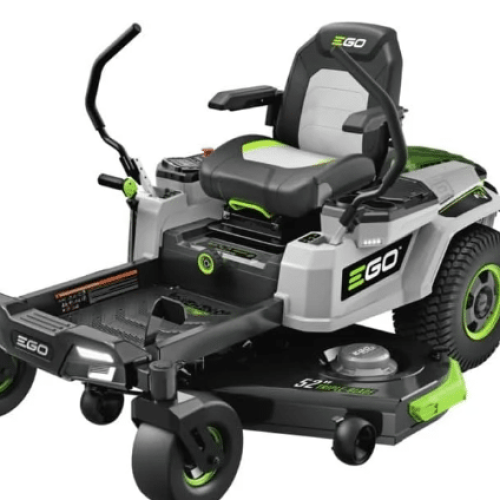Hey guys its JV Chaarles. Let’s make our diets healthier by adding more wholesome foods you want to? The kale microgreen is a great choice. These small, bright greens are full of vitamins, minerals, and antioxidants. They have more nutrients than regular kale leaves. Let’s learn how to grow these superfoods at home. They are so cool!
Key Takeaways
- Kale microgreens are more nutritious than full-grown kale leaves, containing higher levels of essential vitamins and minerals.
- Growing kale microgreens at home is easy and straightforward, with simple equipment and a quick crop cycle.
- Kale microgreens come in a variety of flavorful varieties, from the sweet Red Russian to the curly blue Scotch.
- Incorporating kale microgreens into your diet can provide a multitude of health benefits, including improved energy, tissue repair, and antioxidant protection.
- Kale microgreens are a versatile ingredient that can be used in a wide range of recipes, from salads and smoothies to soups and sautés.
What are Kale Microgreens?
Definition and Health Benefits
Kale microgreens are the young leaves of the kale plant. They are harvested 2-6 days after germination. These tiny greens are full of vitamins, minerals, and antioxidants.
They are loaded with vitamins B6, C, E, and K, plus fiber, phosphorus, folate, magnesium, and potassium. Eating nutritious sprouts boosts energy, brain function, bone health, and fights inflammation.
Kale microgreens have 4 to 40 times more nutrients than mature kale. They give you 325% of the daily Vitamin K you need. This vitamin is key for strong bones and lowering the risk of fractures.
- Kale microgreens are full of vitamins A, B6, C, and K1, and minerals like calcium, iron, copper, magnesium, and potassium.
- These nutritious sprouts are more than just food. They offer big health benefits.
- Fresh kale microgreens have lots of glucosinolate. This helps remove harmful substances from the body and protects against cancer.
- Eating kale microgreens lets you enjoy the health perks of fresh kale in a tasty way.
“Kale microgreens are packed with vitamins, minerals, and antioxidants, making them a true superfood for anyone looking to boost their health and wellness.”
Adding kale microgreens to your meals brings lots of health benefits. It’s a great way to live healthier.
Getting Started with Kale Microgreen Cultivation
Growing kale microgreens at home is simple and rewarding. You’ll need a few basic items: kale seeds, a growing tray with drainage holes, a watering tray, a grow medium, a lid or plastic for germination, and a weight. You might also want an LED light for the right amount of light.
To start, spread the seeds on the growing tray evenly. Press them into the soil and cover with a thin layer of the medium. Then, put the weight on top to keep the seeds in contact with the soil.
After sowing, cover the tray with a lid or plastic to keep it moist during germination. This takes about 7 days, when you’ll see the first sprouts. Then, remove the cover and let them get light, whether from the sun or an LED light.
For healthy growth, keep the temperature at least 60 degrees Fahrenheit, day and night. Rinse and drain the seeds twice a day to help them grow well.
With the right gear and a bit of care, you can grow a lot of nutrient-rich kale microgreens at home. Just follow these easy steps to enjoy their health benefits and great taste. If I can do it anyone can!
Planting Kale Microgreens
Growing your own kale microgreens at home is rewarding. It lets you add a super-nutrient-dense food to your meals. The key to success is knowing the right seed density and germination techniques. Let’s explore these details to help you start your kale microgreen journey.
Seed Density and Germination Tips
The right amount of seeds depends on your growing tray size. For a Home Microgreens tray, use 3.3-3.5 grams of seed. For a 1010 tray, use 8.0-8.5 grams, and 17 grams for a 1020 tray. This ensures your kale microgreens grow well.
To get seeds to germinate, mist them with water before covering and placing them in a dark, humid spot for 3-4 days. This step helps the seeds absorb moisture and start sprouting. Then, move the tray to a bright area to let them grow further.
By following these guidelines, you’ll grow a lot of nutrient-rich kale microgreens at home. Keep an eye out for more tips on caring for your kale microgreens as they grow.
Caring for Your Kale Microgreens
Growing kale microgreens at home is rewarding but needs proper care. After germination, they need sunlight or LED lights to grow well. They should get at least 4 hours of light daily for healthy growth. Five or six is even better!
Watering your kale microgreens is key. Use a bottom-watering method to keep the roots moist without soaking the leaves. Water when the soil feels dry, but don’t overwater.
Good air flow and humidity levels are vital for your kale microgreens. This prevents moisture buildup and fungal problems. Use ventilation or a small fan to keep the area well-aired.
Kale microgreens grow in 9 to 14 days from seed to harvest. Keep an eye on them and adjust as needed for the best results. With proper care, you can enjoy a harvest of these nutritious greens at home.
| Microgreen Variety | Germination Time | Harvest Time | Seed Density (10×20 tray) |
|---|---|---|---|
| Kale | 2-3 days | 8-12 days | 28.5 grams |
| Broccoli | 2-3 days | 10-14 days | 25 grams |
| Radish | 2-4 days | 8-12 days | 20 grams |
| Sunflower | 2-4 days | 10-14 days | 30 grams |
The secret to growing kale microgreens is the right environment and consistent care. With dedication, you can enjoy a harvest of these nutritious greens at home.
“Incorporating microgreens into meals can significantly increase their nutritional value, contributing to better overall health.”
Kale Microgreens Harvest and Storage
Harvesting and storing your kale microgreens right is key to enjoying their fresh taste and nutrients. We’ll show you how to make sure your kale microgreens are the best they can be.
Harvesting Kale Microgreens
Kale microgreens are ready to pick when they grow to 3-3.5 inches tall, about 10 days after planting. To pick them, cut the microgreens just half an inch above the soil. This way, you keep the delicate stems and leaves intact. They can grow again for another harvest or two.
Storing Kale Microgreens
Make sure your kale microgreens are dry before you store them. If they’re wet, they might spoil faster. After drying, put them in an airtight container in the fridge. They can last 7-9 days this way.
If you want to keep them longer, freezing is an option. Freezing might reduce some nutrients, but it can make them last much longer. Just spread the microgreens on a baking sheet and freeze until they’re hard. Then, put them in a container or bag for the freezer.
Maximizing Shelf Life
Here are some tips to keep your kale microgreens fresh and tasty:
- Don’t wash the microgreens until you’re ready to use them. Moisture can make them spoil faster.
- Keep them in the fridge to keep them crisp and flavorful. The cool temperature and low humidity help a lot.
- Use a salad spinner or paper towels to dry the microgreens well after picking. This ensures they’re dry before you store them.
- If you freeze them, use them within 2-3 months for the best quality and nutrition.
By following these tips on harvesting and storing, you can enjoy your homegrown kale microgreens for days or weeks. They’re a superfood that’s full of vitamins, minerals, and antioxidants.
“Kale microgreens are a superfood powerhouse, packed with essential vitamins, minerals, and antioxidants that can boost your health and well-being.”
With the right harvesting and storage, you can add these greens to your meals and snacks every day. This way, you and your family can enjoy the many benefits of kale microgreens. Every little bit helps!
Kale Microgreens in the Kitchen
Kale microgreens are super versatile and fit into many dishes. They have a mild, sweet taste that goes well with lots of ingredients. This makes them great for healthy meals. Use them in salads, sandwiches, pasta, or stir-fries to make your food better.
Recipes and Serving Suggestions
Try these tasty ways to add kale microgreens to your meals: I hope you enjoy!!
- Kale Microgreen Salad: Mix kale microgreens with avocado, cucumber, cherry tomatoes, and a tangy dressing. It’s a refreshing salad full of superfoods.
- Kale Microgreen Pesto Pasta: Make a pesto with kale microgreens, pine nuts, garlic, Parmesan, and olive oil. Then, toss it with pasta for a quick, healthy meal.
- Kale Microgreen Avocado Toast: Spread mashed avocado on whole-grain bread, add kale microgreens, and a bit of lemon juice. It’s a nutritious and tasty breakfast or snack.
- Kale Microgreen Stir-Fry: Cook kale microgreens with mushrooms, bell peppers, and your favorite protein. Serve it over quinoa or brown rice for a balanced meal.
Get creative with kale microgreens in your recipes or use them as a garnish for soups, sandwiches, and pizzas. They’re versatile and full of nutrients, making them essential for a healthy kitchen.
“The beauty of kale microgreens is that they can elevate any dish with their fresh, nutrient-dense flavor. They’re a quick and easy way to pack more greens into your diet.”
Troubleshooting and Tips
Growing kale microgreens can be rewarding but has its challenges. Growers often face mold, fungus, uneven growth, and other issues. With the right techniques and tips, you can overcome these problems and enjoy a harvest full of nutrients.
Addressing Mold and Fungus
Mold and fungus are common problems with kale microgreens. They happen when there’s poor air flow or too much water, creating a damp place for fungi. Ensure good air flow and don’t overwater. Regular watering from the bottom and keeping humidity right can also stop mold and fungus.
Promoting Consistent Growth
Kale microgreens may grow unevenly or fall over if they don’t get enough light or are too crowded. Make sure they get at least 6 hours of natural light or 12 hours of artificial light with a 20-watt bulb. Plant seeds evenly and don’t overcrowd them to help them grow well.
Troubleshooting Germination
Slow or uneven germination can be frustrating. It usually happens from too little or too much water. The right moisture balance is key for germination. Use consistent bottom watering and keep humidity around 90% during germination to help your kale microgreens start strong.
Preventing Pest Invasions
Pests like fruit flies, aphids, whiteflies, and thrips can invade your microgreens. Use a good growing medium and don’t add outdoor dirt, which can have pests. Keeping your growing area clean helps keep pests away.
By solving these common problems and using the right tips, you can grow a healthy crop of kale microgreens. Paying attention to details and adapting to your plants’ needs is key to success.
| Microgreen Variety | Germination Time | Harvest Time | Ideal Harvest |
|---|---|---|---|
| Amaranth | 2 to 3 days | 12 to 14 days | 12 days |
| Arugula | 3 days | 6 to 12 days | 10 days |
| Basil | 3 to 4 days | 20 to 25 days | 22 days |
| Beet | 3 to 4 days | 10 to 14 days | 10 days |
| Broccoli | 2 to 3 days | 8 to 12 days | 10 days |
| Brussels Sprout | 1 to 2 days | 8 to 10 days | 10 days |
| Buckwheat | 1 to 2 days | 8 to 12 days | 10 days |
| Cabbage | 1 to 2 days | 8 to 12 days | 10 days |
Germination and harvest times vary among microgreen types. Knowing these times helps you grow your kale microgreens well.
“Mold growth is identified as the number one problem encountered by microgreens growers, particularly when first starting out.”
To avoid mold and fungus, make sure your growing area has good air flow and the right humidity. Use bottom watering and don’t let leaves get wet before harvesting to prevent these issues.
Fixing problems and using the right tips are key for a great kale microgreen harvest. By tackling mold, uneven growth, and germination issues, you can grow a crop full of nutrients and flavor.
Conclusion
Growing kale microgreens at home is easy and rewarding. It gives you a steady supply of nutrient-rich, tasty greens. By following the steps and tips in this article, you can grow your own kale microgreens. They are great for both seasoned farmers and beginners.
Kale microgreens are part of a trend towards smaller, sustainable farming. They help fight global nutrient shortages. Adding kale microgreens to your meals is easy and healthy.
When growing kale microgreens, focus on food safety and the best growing conditions. With care, you can enjoy harvesting your own nutritious microgreens. Let them be a tasty, healthy part of your meals.
FAQ
What are kale microgreens?
Kale microgreens are tiny, young leaves from the kale plant. They are harvested 2-6 days after germination. These leaves are packed with vitamins, minerals, and antioxidants, making them a superfood.
What are the health benefits of kale microgreens?
Eating kale microgreens boosts energy, brain function, and bone health. They also help reduce inflammation. These greens are full of vitamins B6, C, E, and K, plus fiber, phosphorus, folate, magnesium, and potassium.
What equipment and supplies do I need to grow kale microgreens at home?
You’ll need kale seeds, a growing tray with drainage holes, and a watering tray. Also, get a grow medium like a potting mix with coconut coir. A lid or plastic for germination and a weight to keep seeds down are helpful. An LED light is good if your window isn’t sunny.
How do I plant kale microgreens?
Use the right amount of seeds for your tray size. For a Home Microgreens tray, use 3.3-3.5 grams of seed. For bigger trays, use more seeds. Mist the seeds with water, cover, and keep in a dark, humid spot for 3-4 days.
How do I care for my kale microgreens?
Move your kale microgreens to a sunny spot or under LED lights for 4 hours a day. Water them from the bottom to keep the leaves dry and prevent mold. Good air circulation and humidity are key for healthy growth.
When and how do I harvest kale microgreens?
Harvest them when they’re 3-3.5 inches tall, about 10 days after planting. Cut them just above the soil line. Make sure they’re dry before storing to keep them fresh for 7-9 days in the fridge.
How can I use kale microgreens in the kitchen?
Use kale microgreens in salads, sandwiches, pasta, and stir-fries. They have a mild, sweet taste that goes well with many foods. They’re perfect for healthy meals.
What are some common issues when growing kale microgreens, and how can I troubleshoot them?
Issues like mold can happen from bad air flow or too much water. The article offers tips to fix these problems. It also shares growing tips, like bottom watering and keeping foliage dry, for the best results.
Source Links
- https://homemicrogreens.com/how-to-grow-kale-microgreens/ – How to Grow Kale Microgreens Perfectly Every Time – Home Microgreens
- https://urbanfarming.com/kale-microgreens/ – Kale Microgreens How To Grow From Seed To Harvest In 4 Days! – Urbanfarming.com
- https://homemicrogreens.com/kale-microgreen-nutrition/ – A Quick Guide to Kale Microgreen Nutrition – Home Microgreens
- https://microgreensworld.com/kale-microgreens-nutrition/ – Unlocking the Nutritional Powerhouse: The Kale Microgreens Guide
- https://www.cleaneatingkitchen.com/kale-microgreens/ – Kale Microgreens 101: Benefits and How to Grow
- https://ingarden.com/pages/kale-microgreens-benefits – Superfood Kale Microgreens Health Benefits | ingarden
- https://www.rainbowheirloomseeds.com/product-page/kale-trio-sprouting-microgreen-mix – Kale Trio Sprouting & Microgreen Mix | Rainbow Heirloom See
- https://www.texasrealfood.com/promptuary/microgreens/kale-microgreens/ – Kale Microgreens
- https://russellnursery.com/articles/microgreens-are-the-new-kale/ – Microgreens are the New Kale | Russell Nursery
- https://ferrymorse.com/products/kale-lacinato-microgreen-seed – Microgreens Kale Lacinato Annual Vegetable Seeds
- https://practicalgrowing.com/microgreens/how-to-grow-kale/ – How to Grow Kale Microgreens Successfully | Practical Growing
- https://www.reddit.com/r/microgreens/comments/h9gmeb/how_to_grow_kale_microgreens_from_seed_to_harvest/ – Reddit – Dive into anything
- https://www.farmfreshchoice.com/kale-microgreens/ – Is Kale Microgreens Good for You or Not – Farm Fresh Choice
- https://mpseeds.eu/kale-tuskan-black-microgreens-seeds – Kale, Tuscan Black Microgreens Seeds
- https://www.epicgardening.com/grow-kale-microgreens/ – How to Grow Kale Microgreens in 5 Easy Steps
- https://medium.com/@leafylives.in/mastering-the-art-of-growing-kale-microgreens-d2ede2b42725 – Mastering the Art of Growing Kale Microgreens
- https://survivalgardenseeds.com/products/kale-microgreens-seeds – Kale Microgreens Seeds
- https://www.bootstrapfarmer.com/blogs/microgreens/the-ultimate-microgreen-cheat-sheet – Ultimate Microgreen Cheat Sheet | Learn How to Grow Microgreens – Bootstrap Farmer
- https://www.microgreensresource.com/about-5-4 – Troubleshooting Top 10 Problems | Microgreens Resource
- https://www.nickgreens.com/post/2017/03/21/how-to-solve-the-top-problems-in-growing-microgreens – How to solve the top problems in growing microgreens
- https://www.ncbi.nlm.nih.gov/pmc/articles/PMC9864543/ – Microgreens—A Comprehensive Review of Bioactive Molecules and Health Benefits
- https://startmicrogreens.com/kale-microgreens-a-miniature-powerhouse/ – Kale Microgreens: An Enriched Super Bowl Of Nutrition






